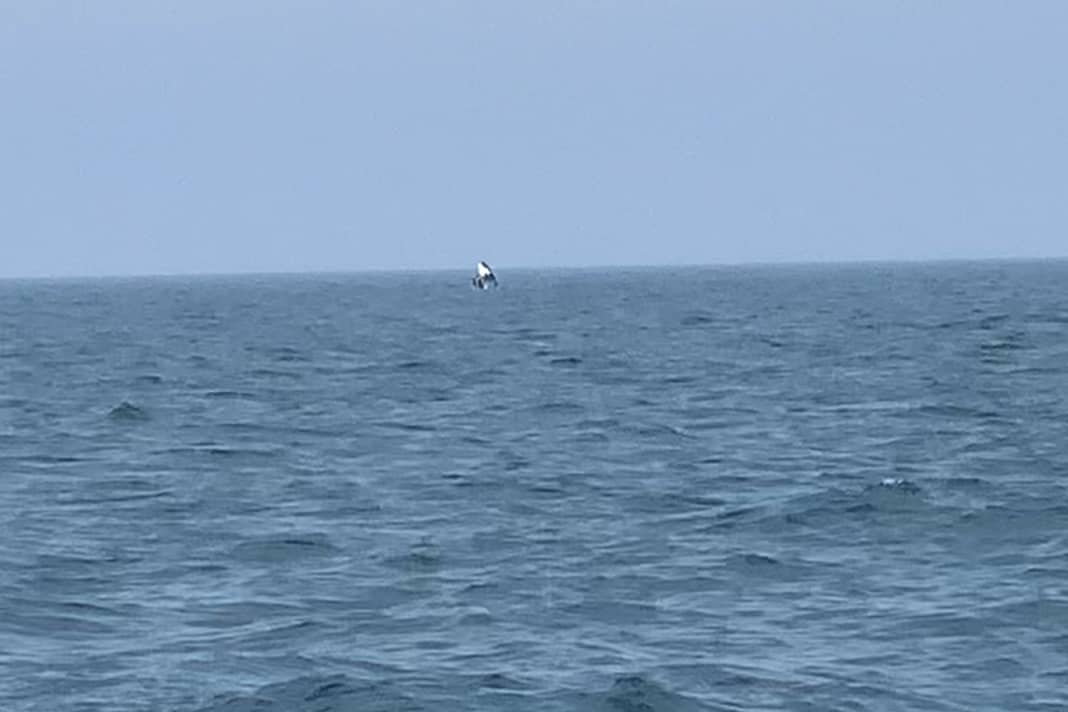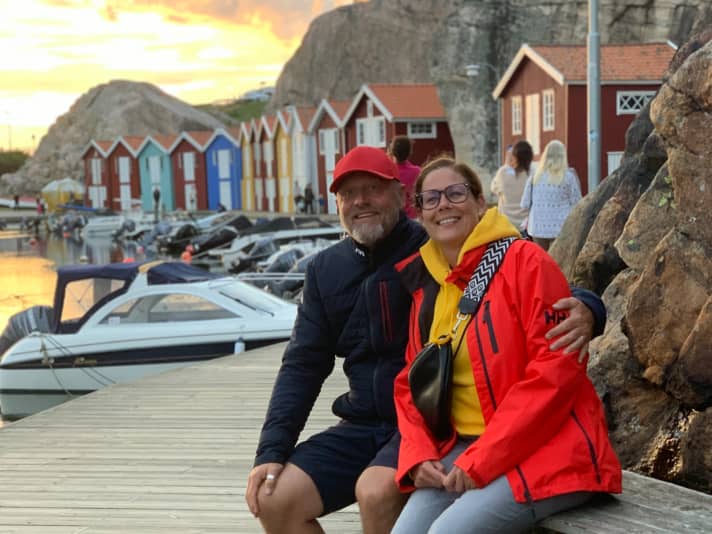





Terrifying images are currently doing the rounds: After Spanish media had reported for the first time last week, yesterday also published the " Picture " an article about sailors who allegedly shoot at orcas in the Strait of Gibraltar. You can see fireworks being fired into the water several times from a catamaran. It is not known whether the animals were injured or killed in the process.
Although this case has not been confirmed, critical interactions with the Iberian subpopulation have been occurring for several years. For reasons that remain unclear, the orcas have repeatedly damaged the rudder blades of sailing yachts under 20 metres in length in particular since 2020. Three ships have sunk as a result of such interactions.
After the summer of 2022 a video of five orcas on the Danish coast was circulating on the internet, there has now been another sighting in an atypical area. German sailors encountered a single orca in the Skagerrak. However, anyone who is now worried about sailing the North Sea can calm down again.
Orca attacks: only one subpopulation poses a threat to sailors
The killer whales, which are considered very intelligent, are able to communicate and learn from each other. So far, however, only this one Iberian subpopulation has been found to be dangerous, and researchers do not expect this behaviour to spread to the dozens of populations worldwide. "It is very unlikely that this behaviour of 'rough play' with boats can be transferred over long distances," says Mark Simmonds, scientific director of the Marine conservation organisation "OceanCare". He can therefore give the all-clear: "Outside the area where the known Iberian subpopulation lives, there is no general danger from orcas for shipping."
After a brief moment of shock, the couple Daniel and Eva Lütkenhaus also experienced this on their three-week Scandinavian cruise. On their way back, they encountered a killer whale on their Bavaria 35 Exclusive "Paikja" between Lysekil (Sweden) and Skagen (Denmark) in the afternoon. Daniel remembers the first time he saw the dorsal fin by which he recognised the marine mammal: "It appeared on the starboard side, then on the port side, I would estimate about ten metres away."

Sailors observe the killer whale from a distance
"Of course we were a bit scared," he continues. Meanwhile, the orca rolled and turned "as if it was wallowing. And it seemed to me that it was eyeing the ship from both sides. But it was never at the back of the rudder." Once the killer whale had submerged again, the pair switched off the autopilot to minimise noise. With a wind of just under 10 knots and a flat sea, they then tried to get at least a little further away and let themselves drift at some distance. After the brief scan, the animal no longer seemed interested at all, says the 60-year-old architect and passionate cruising sailor.
His wife hadn't even really seen the orca until then, when they already thought it was over again. But then she spotted him again because of his water fountain, which is why the couple stopped their 35-foot yacht completely. "Once we had put some distance between him and us, it was just a magical spectacle," recalls Daniel, still mesmerised. The whale jumped twice, which they were able to capture on video with their mobile phones. The encounter lasted just under ten minutes in total before the killer whale disappeared again. "We didn't want to turn round and risk drawing attention to ourselves. So we held our course and took out the genoa again to sail back to Skagen."
Moment for life- Origin of the orca unclear
In reference to the 1993 film "Free Willy - Call of Freedom", which Daniel still watches once a year, they subsequently named the orca "Willy". However, it is not quite so easy to work out where the name comes from. "Killer whales are known from the Scottish and Swedish coasts as well as from further north," explains Mark Simmonds. It is therefore likely that it belongs to one of these populations. What is also surprising, however, is that it appears to have been alone, which is a rare occurrence. "Normally they move around in groups and can be quite widely dispersed. They tend to stay in the areas that their family groups know well, but they can also move further away, perhaps to prey." Even the marine mammal expert cannot tell from the video whether it is a female or a non-adult male.
However, the experts at OceanCare do not expect any attacks or dangerous interactions in the North Sea. Nevertheless, the two German sailors did exactly the right thing. In general, the organisation advises people who encounter orcas or other dolphin species at sea to observe and enjoy them from a distance and try not to disturb them.
For Mr and Mrs Lütkenhaus, the crossing to Skagen was a unique experience. "We saw beautiful sounds, fjords and skerries with fantastic light on this trip, but this experience remains unforgettable, and it still feels good to look at it. It's something you take with you for life."


